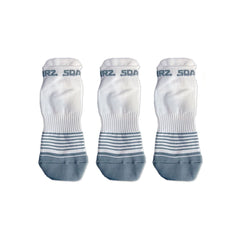Clinical study conducted by Kentucky Indiana Foot and Ankle Specialists.
Ali Ahmed, DPM, AACFAS¹; Hans Humrick, DPM, AACFAS¹; Paul Klutts, DPM, FACFAS²; Amanda Denzik, DPM, FACFAS³
¹KYINFAS Fellow | Reconstructive Foot & Ankle Surgery, ²KYINFAS Fellowship Director, ³KYINFAS Assistant Fellowship Director
Statement of Purpose
The biomechanics of baseball have been well documented including the role of the posterior kinetic chain. However the specifics of the role of the subtalar joint, further, the use of corrective hindfoot devices to allow for increased ground reactive forces has not been studied. The authors hypothesize that the use of corrective shoe gear which promotes ground reactive forces will have an effect on exit velocity.
Methodology & Procedure
A baseline hindfoot position of 38 collegiate level baseball players (Georgetown College Athletics, Georgetown, KY) was evaluated on the field using a pressure mat system (RAPID-Sports, Cleveland, OH, USA) along with the corresponding exit velocity (YakkerTech, Phoenix, AZ, USA) of an average of three swings with no corrective shoe gear. The players then took another three swings while donning the corrective shoe gear (SQAIRZ, Windham, NH, USA), and the corrected exit velocity was also measured. A t-test was conducted with the obtained data to determine the statistical significance between the data sets.

Table Key:
AVG: Average velocity of 3 swings with generic shoesAVG*: Average velocity of 3 swings with corrective shoeDelta: Change in velocity
Results
60.5% of players (n=23) experienced an improvement to their exit velocity with corrective shoe gear (p=0.007).
Analysis & Discussion
This study has shown there is a correlation between increased ground reactive forces of the hindfoot with batting exit velocity, which has implications about the role of the subtalar joint in the various phases of the baseball swing. From this data, the position of the hindfoot should be considered when training athletes for improved performance. Future studies are indicated in examining the mechanics of the shoes and isolating other variables including foot type and specifics to the degree of increased GRF and HF correction provided by the shoe gear.
Acknowledgements: Thank you to Chad Miller and Heather Keepers of iD Evolution for facilitating this project and allowing the team to help conduct this on-the-field study. Thank you to to the Georgetown College Athletics Department and the baseball team.







1 comment
Your guides helped me figure things out, thanks!